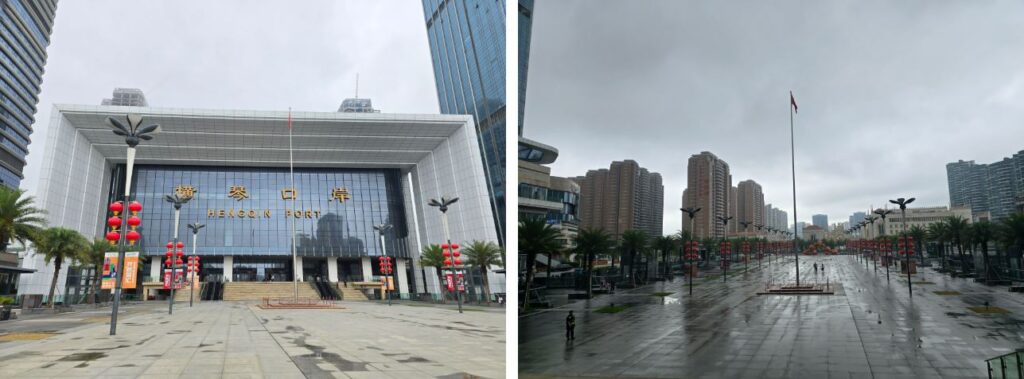Macau is designated as a Special Administrative Region (SAR) of China.
Although it now has a visa-free policy with mainland China, it wasn’t always that way.
I remember once having to apply for a one-month short-term visa to enter China — but now, it’s visa-free!
.
Even before China and Macau adopted mutual visa exemptions, South Korean citizens could travel freely to both Hong Kong and Macau without a visa.
.
For this trip, I decided to book my accommodation in Zhuhai, a city right next to Macau.
.

.
Since Zhuhai is directly connected to Macau, it’s easily accessible via subway.
Staying in Zhuhai helped me save a lot on accommodation costs compared to staying in Macau itself.
.
Although Macau is part of China, it operates separately as a Special Administrative Region.
So, even though you don’t need a visa to enter mainland China, you still have to pass through a passport control gate that automatically scans your travel document.
It’s similar to entering another country —
Macau is China, Zhuhai is China, yet you still need to go through immigration when crossing between them.
.
.

.
After landing at the airport, I headed straight to my hotel.
I took the hotel shuttle bus connected to the airport, which brought me to Hengqin Port.
.
Beyond the Hengqin Port immigration building lies the passageway into Zhuhai, so I chose a nearby hotel within walking distance after crossing through.
It turned out to be a clean, affordable hotel with breakfast included — excellent value compared to Macau hotels.
.
Because property prices and the cost of living are higher in Macau, many Chinese residents live in mainland Zhuhai but work in Macau, so you’ll see many people crossing the administrative border every day.
.

.
When you exit Hengqin Port on the Zhuhai side, you’ll find a quiet, modern building.
At night, the left side of the terminal fills with cars waiting to pick up family members, couples, and friends, while in front you’ll find a few convenience stores where you can grab snacks or drinks.
.


.
After dropping off my luggage at the hotel, I headed back out —
and since the distance between Macau and Zhuhai is so short, it’s easy to go back and forth multiple times a day.
If you’re planning a Macau trip, you don’t have to worry about staying in mainland China; it’s completely manageable.
The subway connection makes travel even more convenient, which I’ll explain a bit more below.
.


.
You can get around Macau easily by taxi or metro, both of which are clean and efficient.
Even better, hotel shuttle buses operate frequently and are free of charge.
However, you’ll need to choose the right bus depending on your destination — most of them go to the southern Taipa Island hotels, where many of the major resorts are located.
Since there are so many hotels and shuttle routes, you’ll have plenty of choices.
.
Buses generally run every 15–20 minutes, but service ends fairly early at night.
If you plan to return using the same bus, make sure to check the last departure time before you get off.
.
.

.
The Macau Metro is easy to use.
You can check the full route on Google Maps by searching for “Macau Metro Station.”
To buy a ticket, simply tell the ticket clerk your destination and the number of people in your group — they’ll give you a coin-shaped ticket.
Boarding and exiting the metro works just like in other countries, so it’s very straightforward.
The roads, stations, and trains are all clean and modern, much like those in Korea, so you’ll feel comfortable right away.
.
Personally, after having some unpleasant experiences with taxis in other parts of China, I tend to prefer public transportation — and Macau’s metro is one of the cleanest and most convenient systems I’ve used.
.

.
From Hengqin Metro Station, you can head straight to the border checkpoint to cross into Macau.
If you stay in Zhuhai, you can easily explore Macau while saving money and avoiding travel stress.
That’s how I traveled between Macau and Zhuhai — smooth, simple, and surprisingly enjoyable.

